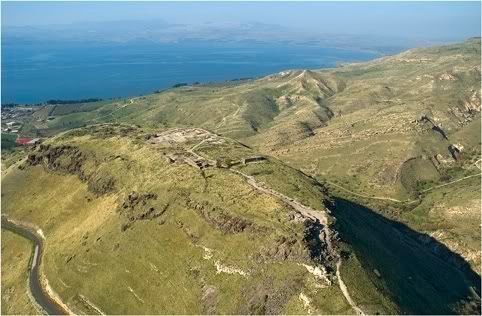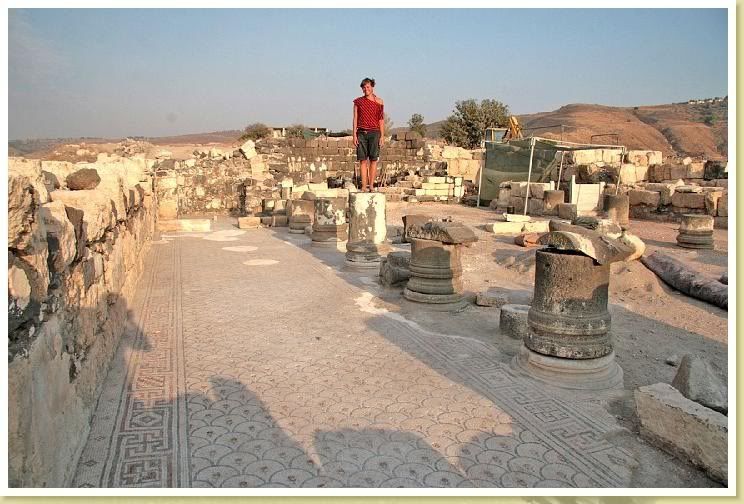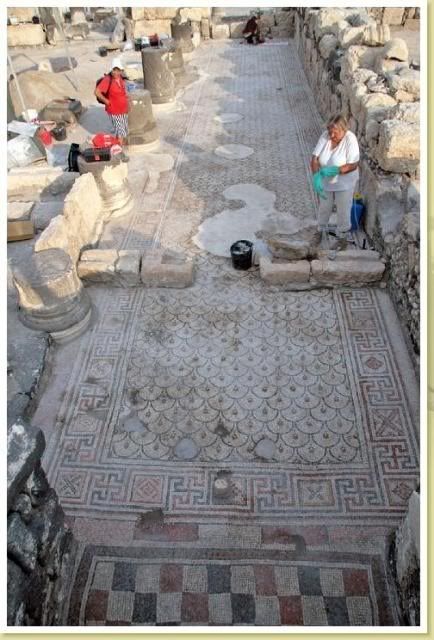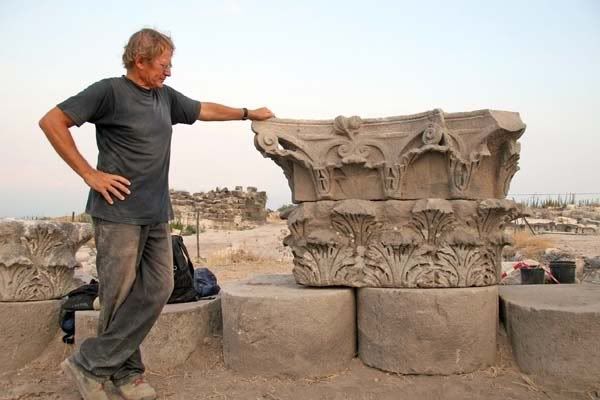Revealing the Glories of Ancient Hippos
The relatively small area of this little city detracts nothing from the impressive architectural remains one beholds as the casual observer traverses its ancient streets. "Monumental" is the best word that comes to mind when describing this fortified Hellenistic-Roman style space and its commanding view of the surrounding countryside.
Known as the ancient city of
The Project
The research of Hippos-Sussita is an international Israeli-Polish-American project collaboration co-directed by: Professor Arthur Segal from the Zinman Institute of Archaeology, University of Haifa; Professor Jolanta Mlynarczyk from the Research Centre for Mediterranean Archaeology, Polish Academy of Sciences; Dr. Mariusz Burdajewicz of the National Museum, Warsaw; Professor Mark Schuler from Concordia University, St Paul, USA; and Mr. Michael Eisenberg, a PhD candidate from the Zinman Institute of Archaeology who serves as Professor's Segal assistant. The objective of the expedition is to uncover the entire ancient city, the street network, the main public secular and religious buildings, as well as the domestic quarters. The expedition also hopes to survey and excavate the two necropoleis located to the south and south-east of the city. The relationship between the city and the surrounding countryside will also be examined in future seasons, especially the area stretching between the city and the lake. Further, they plan to conduct a detailed survey of the lake's shore to establish the exact location of Hippos' port.
The 2009 Goals
During the summer of 2009 (July 5 --July 30), the team plans to:
- Continue the excavation of the Roman Monumental Arch area, east of the Hellenistic Compound;
- Reveal more of the Roman Monumental Building west of the Forum;
- Complete the documentation and preservation of the North West Church;
- Complete the excavation and preservation of the North East Church;
- Complete the excavation of the insula located between the North East Church and the Decumanus Maximus;
- Continue the excavation of the Roman Byzantine Bath located between the Forum and the southern city wall; and
- Continue the preservation treatment in all the sites exposed so far
The project directors are inviting students and volunteers from all over the world to come join them in this exciting long-term expedition. If you are interested, go to http://hippos.haifa.ac.il for more detailed information and to find out how to apply.
Labels: archaeological digs in israel, hellenistic archaeology, roman archaeology







0 Comments:
Post a Comment
<< Home